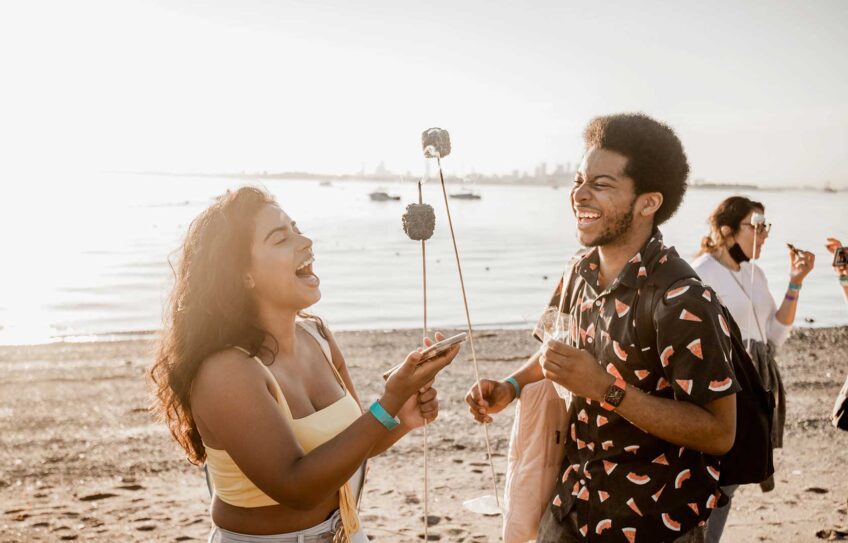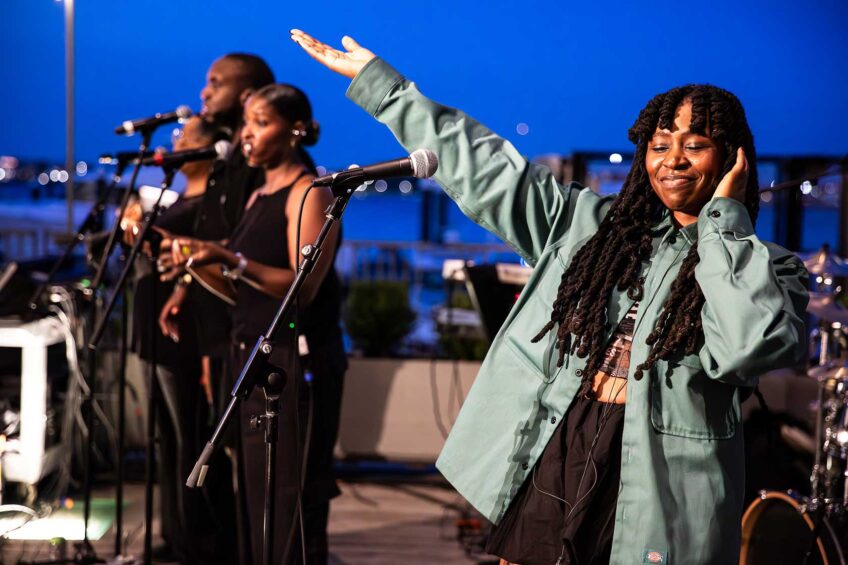![Banner [Virtual] Art Gallery](https://baystatebanner.com/wp-content/uploads/2024/02/From-Thy-Ancestors-719x1024.jpg)
View Banner Art Gallery
This is the eleventh in a weekly series presenting highlights of conversations between leading Black visual artists in New England. In this week’s podcast, L’Merchie Frazier interviews artist Johnetta Tinker. The interview has been condensed and slightly edited.
Boston artist Johnetta Tinker was director of community programs for the Isabella Stewart Gardner Museum from 1999 to 2014 and Artful Adventures program educator at the Museum of Fine Arts Boston from 1986 to 1999. She has been active in the arts community, giving workshops and producing public art projects, and has participated in several artist-in-residency and art exchange programs, including at the Institute of American Indian Arts in Santa Fe, New Mexico, and Guangzhou Academy of Fine Arts in China. She has lectured on art with special attention to Ancient Nubia and master artist John Biggers, with whom she studied.
Tinker describes her artwork as ancient and contemporary. Her influences are strongly rooted in the symbols, rhythms, and movements of nature’s surrealistic patterns. Visions from her dreams and personal life experiences also provide inspiration.
L’Merchie Frazier: Johnetta, when did you start doing this beautiful art and what inspires you and drives you to keep producing?
Johnetta Tinker: Well, my mother was very talented and always had us doing little things around the house. I was always drawing and remember one time I went to a circus. I was in the third grade. One of the teachers told us to draw something from our experiences. I drew this elephant with his foot on one of those stools. And she said, “Oh, my goodness. This is so wonderful!” I said, “Really?”
She put it up on the board. And, you know, it just took off from there. It’s a passion that I’ve always had. I found out later that my grandfather was very talented, even though he never had a chance to do art. But I have cousins on that side of the family — my mother’s father’s side of the family — who are all artists. It’s in the DNA.
What has being a student of the internationally renowned John Biggers meant to you, and how has that guided your visual experience?
My sister went to Texas Southern first, and I went down to visit her. Before you can graduate from [there], you had to paint a mural on the administration — Hannah Hall — wall. So, she took me in and showed me all the murals and said, “There’s a great man who you need to probably study with: John Biggers.” I was going to go to Mass Art, but I got accepted to Texas Southern University. And John Biggers, the knowledge that that man had was amazing. He told all of us, “Artists are like the stock market. You can be up one day and down the next. So don’t get too high on your horse because the same people you pass on the way up, you’re going to have to meet them on the way back down. Always be humble, always be kind, and always create your work. That’s the main thing that you need to do. Be creative.”
You have an interest in Nubian Art. Was John Biggers an influence?
Oh, definitely. He was so interesting because he taught African Art history. I didn’t know anything about Nubia. He said there were these …. Africans who were kings in Nubia — next to Egypt. They ruled over Egypt. We had never learned about Nubia. It was always Egypt.
Blue Hill Avenue is a spot where you have a mural with Susan Thompson.
Yes. Paul [Goodnight] put a mural up first, and then Ekua [Holmes] put up a mural. Susan asked whether ours was going to be as good. I said ours will be better. I was just encouraging her. We pieced together that mural and I think it came out really well, and it’s still up, at that lot … at the Breezes Laundromat.
You’ve worked internationally. Tell us more about your work as an artist who’s travelled.
It’s all about connection and learning, you know, and meeting new people. The knowledge that you gain through travel is amazing. Because you’re dealing with artists, there’s respect on both sides. It’s the historical part that you learn about them, too.
We were just in South Africa — Susan and I, at a storytelling kind of festival. They introduced us as storytellers. Susan looked at me and said, “We’re not telling stories, are we?” I said, “No, but we’re just telling them our stories in our art.”
View Banner Art Gallery









